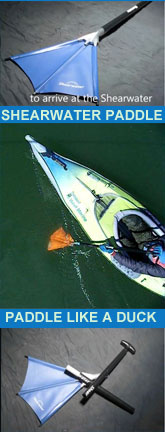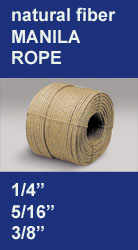I've been a boater on and off through the years, but one nautical itch I'd never scratched was building my own boat. This past summer, I resolved to change that. Having made that decision, I was immediately confronted with the dilemma faced by nearly all new builders. What do I build?
I knew I wanted something easily transportable. I don't live that close to water. It should carry a crew of two in pleasant conditions. It should be reasonably simple, inexpensive, and quick to build. It should be a capable vessel under either sail or oar.
Having done my research on a number of designs and bought a few sets of plans, I then decided to change course and build the Piragua from Jim Michalak's “Boatbuilding for Beginners.”
Piragua seemed to fit some of my criteria, but it is a paddled not rowed and cannot accept a sail. She looks pretty tight for two people. I dropped these initially important criteria as I began to realize that I wanted a dead-simple first project - a proof-of-concept, before building the “perfect boat.” This would be a learning experience; a usable boat would be a bonus.
Finding quality wood was harder than I expected. I almost gave up and went the kit route, but I knew that would mean waiting months to save the money. In the end, I went with 5mm RevolutionPly from the big box store. It seemed a bit flimsy, and it was clear on the forums that purists hated it. But it was cheap, available, and suitable for learning the craft of plywood boatbuilding. I promised my wife (and myself) that if I wasn't happy with it, I'd start over with “real” wood before I used much expensive epoxy.
 |
First peace - the steam |
 |
Bulkheads |
 |
Hatch detail |
 |
Tracing for flush deck |
 |
Stem screwed and epoxy |
 |
A boat like object |
 |
Bow profile |
 |
Stem shaped |
 |
Tapes meet on centreline |
 |
Wales going on |
 |
Before paint |
 |
Hull painted and cockpit primed before decks |
 |
Bow locker ready to close |
 |
Foredeck in place |
 |
Final epoxy on foredeck |
 |
Launch day |
Construction started on September 8th, cutting the stem from a 2x4 with a circular saw. I was able to get a nice cut on one side, but not the other. The first stem went in the scrap bin. The second was just about perfect on one side, but still ugly on the other. Not wanting to waste more wood, I cut two left sides and glued them together. Lots of Titebond III and a few wraps with painter's tape later it was time for bed. I figured I'd probably throw it out and start over in the morning, but at least I could say I started!
Turns out that it was fine, and with renewed confidence, I plowed ahead. Cutting the frames was fun, and I could start visualizing the boat. Cutting a smooth curve for the side panels with a circular saw was daunting, but the results weren't too bad. I clamped the sides together to blocksand the edges to smooth out the curve. I also discovered my first big mistake - two of the panels were identical, not mirror image. I'd been wondering whether to leave part of the hull in a ”natural” finish, but since the A side and C side of RevolutionPly are quite different, that choice was made. A painted hull it would be. About this time we also settled on “Vamos” as her name. “Vamos” roughly translates to “Let's Go!” in Spanish, which seems like the appropriate attitude for such a craft.
Things moved quickly. Vamos was “3D” before I knew it, and then it was time to put the bottom on. I deviated from plans to make her without chine logs. I suppose some of it was aesthetic snobbery, but since all of the boats I was then considering for the next build had stitch and glue bottoms, I wanted to try it out. I did a poor job of lining up one panel that needed some fiberglass tape to reinforce it, but otherwise it went smoothly. It did make me appreciate how much more work it would have been to install a larger, stiffer bottom panel, though. With a hull built of 5mm ply and no chine logs, I added a layer of 3.25 ounce fiberglass cloth from Duckworks to the bottom in addition to the glass tape on the chines. I felt this would add a little strength, and extra experience working with glass.
And then came the sanding. And more sanding. I promised myself I'd be more careful with glue and epoxy next time. A few coats of primer went on, most of which were sacrificed to the palm sander. I dabbed a little of the color coat on. I hoped it would magically hide everything. It didn't, but it felt great to see some color. Once I ruled it “good enough”, the final coats went on pretty quickly since we were having 100 degree heat and 5 percent humidity at the time. Very quick drying in those conditions.
While the hull color cured, Vamos was flipped over so I could paint the cockpit and install the decks. I decided to flush mount the epoxy finished decks. I made a pattern using paper and a charcoal pencil and cut the decks on the bandsaw and trimmed and sanded them to fit. Once all was ready, I bedded them into the hull with thickened epoxy. A couple coats of epoxy to the decks brought the hull to completion.
Refinement of the hatches and seating will follow real world use, so with no major bits left to do, it was time to launch! Vamos hit the water for the first time on November 1st, a blustery morning following an overnight rainstorm. The list of needed tweaks is fairly short, with determining the right sitting height at the top of the list. Finished weight is 42 pounds. Total build time was recorded as 76.75 hours, but I wasn't that attentive to time and rounded up liberally whenever I wasn't sure. All told, I spent about $1000 on the project, but probably $750 was spent on tools or materials that will be used again.
|






















